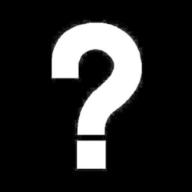http://i617.photobucket.com/albums/tt257/michaelcoco_/0d7e04f4.jpg
Figure above shows an experimental set-up to study image formation by a convex lens A of focal length 40 cm. The object is an illuminated letter ‘ J’ placed a few metres away. The tracing paper is moved to catch a sharp image.
1. 為何the sharp of the image seen by the observer,即係J會係橫向倒置而不是倒置而已?
2. (a) A telescope is set up by placing another convex lens B between the tracing paper and the eye. Lens B acts as a magnifying glass. The final image is adjusted to be far away from the eye.
(i) If three convex lenses of focal lengths 10 cm, 40 cm and 50 cm are available, which one is most appropriate to be used as lens B?
※試詳細解釋※
關於光學的簡單物理問題
2010-01-02 8:13 am
回答 (1)
2010-01-02 9:18 am
✔ 最佳答案
1. The image is a real image as it can be projected onto a screen (the tracing paper). For a real image to be formed, ray-diagram shows that the image must be located on the side of the principal axis opposite to that of the object. This can be easily visualized by tracing the light ray passing through the centre of the lens. Thus, the part of image above the principal axis will, after refraction through the lens,produces image below the principla axis. Likewise, the part of the object below the principal axis will form image above the principal axis after refraction through the lens. This is why the image is found inverted.
By similar rationale, the left part of the object will form image to the right side of the principal axis, whereas the right part of the object will form image to the left of the principal axis. The image so formed is thus laterally inverted.
2. Since the image needs to be far away from the eye, it is best be located at the focus of lens B, such that the final image is at infinity.
Hence, a short focal length lens, of 10 cm, is more appropriate.
收錄日期: 2021-04-29 17:32:48
原文連結 [永久失效]:
https://hk.answers.yahoo.com/question/index?qid=20100102000051KK00017

